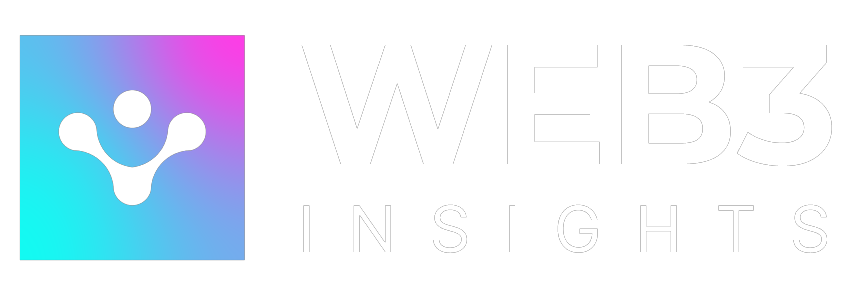It’s no longer a question of whether Bitcoin can live beyond its native chain; it’s about how and who’s making that happen. As Solana cements its place as one of the fastest, most developer-friendly chains in Web3, a new wave of infrastructure projects is racing to connect Bitcoin to Solana’s growing ecosystem.
This isn’t just a technical challenge. It’s a strategic shift: turning BTC from a passive store of value into an asset that can flow, earn, trade, and participate across DeFi and beyond.
A handful of standout protocols are building the pipes between Bitcoin and Solana to make this possible. While Zeus Network is making headlines with its permissionless approach, it’s not alone.
Let’s explore the top protocols making Bitcoin on Solana possible and what they mean for the future of cross-chain liquidity.
1. Wormhole: Generalized Interoperability for Bitcoin on Solana
Wormhole is one of the oldest and most integrated cross-chain protocols in the Solana ecosystem. It connects Solana to over 20 other chains including Ethereum, Avalanche, and Binance Smart Chain.
For Bitcoin, Wormhole uses wrapped versions like wBTC and BTCb, which are minted and backed by custodians. These assets can be bridged into Solana and used in dApps. While this model is more centralized than fully permissionless protocols, Wormhole’s broad support and integrations make it a popular option.
Wormhole shines in user access and reach. Many Solana protocols are already integrated with it, giving Bitcoin holders lots of choices once they’re in the ecosystem. For users who are less concerned about full decentralization and more focused on convenience, Wormhole provides an easy path.
2. Portal Bridge: Wormhole’s Friendly Frontend for Bitcoin on Solana
The Portal Bridge is essentially Wormhole’s user interface. It simplifies the bridging process for non-technical users, allowing them to send BTC from other chains into Solana with just a few clicks.
Although it’s still using custodial models under the hood, Portal provides a smooth and familiar experience. You connect your wallet, select BTC, and follow a clean interface to mint the Solana-side asset. It’s beginner-friendly and supported by a growing range of Solana-native dApps.
Portal supports multiple versions of Bitcoin on Solana, including wBTC and BTCb, giving users flexibility based on their preferred source chain and asset type.
3. Allbridge: Broad Support for Cross-Chain Bitcoin on Solana
Allbridge provides infrastructure for moving tokens between both EVM-compatible and non-EVM chains. It supports several wrapped Bitcoin variants and helps liquidity flow into Solana.
Though not entirely decentralized, Allbridge is known for being fast and developer-friendly. It allows dApps to integrate Bitcoin support with minimal technical friction. This helps projects quickly tap into Bitcoin-based capital.
Platforms using Allbridge benefit from streamlined access to liquidity, and users can move BTC from chains like BNB or Polygon into Solana with relatively low fees. For builders aiming to reach a broad audience, Allbridge is an appealing toolkit.
4. Ren Protocol (Legacy Model with Lasting Influence)
Ren Protocol once offered a trust-minimized bridge for Bitcoin through a system of decentralized nodes. It minted renBTC as a BTC-backed token, giving users exposure to Bitcoin on other chains.
While Ren is no longer active under its original team, it was one of the first to attempt truly decentralized Bitcoin bridging. In many ways, it paved the way for newer protocols like Zeus, proving that custodians weren’t the only option.
Even as it enters legacy status, Ren remains an important chapter in the story of Bitcoin on Solana, and its influence can still be felt in today’s designs.
5. Core DAO Bridge: A New Entrant in the Bitcoin-to-Solana Landscape
The Core DAO Bridge is a newer project gaining attention for its approach to multichain Bitcoin interoperability. Core DAO focuses on secure and scalable bridges that support Bitcoin liquidity across EVM and non-EVM chains, including Solana.
Though still in development and testing, Core DAO Bridge is building a trust-minimized protocol designed to move BTC into ecosystems like Solana for DeFi, staking, and on-chain transactions. Its roadmap emphasizes decentralization, validator-based security, and open infrastructure.
As Core DAO continues to mature, it’s a protocol to watch in the Bitcoin on Solana space, offering an alternative to legacy wrapped-token systems.
Why This Matters for Bitcoin and Solana
Bringing Bitcoin onto Solana does more than just make BTC usable. It brings new liquidity to Solana’s DeFi protocols, strengthens its economic base, and helps Bitcoin holders tap into real yield opportunities.
With Bitcoin on Solana, users can lend BTC, use it as collateral, provide liquidity, or even buy NFTs. This increases both Solana’s total value locked (TVL) and gives Bitcoin new life as a productive, versatile asset.
In the long run, Bitcoin’s role in crypto won’t just be about being held. It’ll be about being used, and interoperability protocols are the engine driving that shift.
Conclusion
As the crypto world becomes more connected, Bitcoin needs a way to stay relevant beyond just being held in cold storage. Solana’s fast, composable architecture offers the perfect environment for that transformation.
Protocols like Zeus are helping Bitcoin adapt to the new era, while more established bridges like Wormhole and Allbridge give users a range of tools to participate however they choose.
Bitcoin on Solana is no longer an experiment. It’s an emerging standard. And as these interoperability protocols mature, expect to see BTC become a much more active player in Web3.
Whether you’re a builder, investor, or just a Bitcoin believer, the tools are here. Now it’s time to use them.









